Choosing between Sicily and Naples for your Italian getaway can be tricky. These two iconic destinations offer unique charms that have drawn travelers for centuries. Sicily, the largest island in the Mediterranean, boasts a rich tapestry of cultures and stunning landscapes. Naples, on the other hand, pulses with energy as one of Italy’s most vibrant cities.
Sicily and Naples each provide distinct experiences that cater to different travel styles and preferences. Sicily offers sun-soaked beaches, ancient ruins, and a slower pace of life.
You can explore Mount Etna, wander through charming hilltop towns, and indulge in delicious Sicilian cuisine. Naples brings you into the heart of bustling city life, with world-class museums, historic sites like Pompeii nearby, and the birthplace of pizza.
Both places have their special magic. Sicily’s diverse influences from Greek, Roman, Arab, and Norman cultures create a unique blend you won’t find anywhere else. Naples has a gritty charm and passion that’s hard to resist, with friendly locals always ready to share their city’s secrets.
Key Takeaways
- Sicily offers diverse landscapes and a mix of cultural influences
- Naples provides a lively urban experience with easy access to historic sites
- Both destinations showcase Italy’s rich history, art, and culinary traditions
Geographical Overview
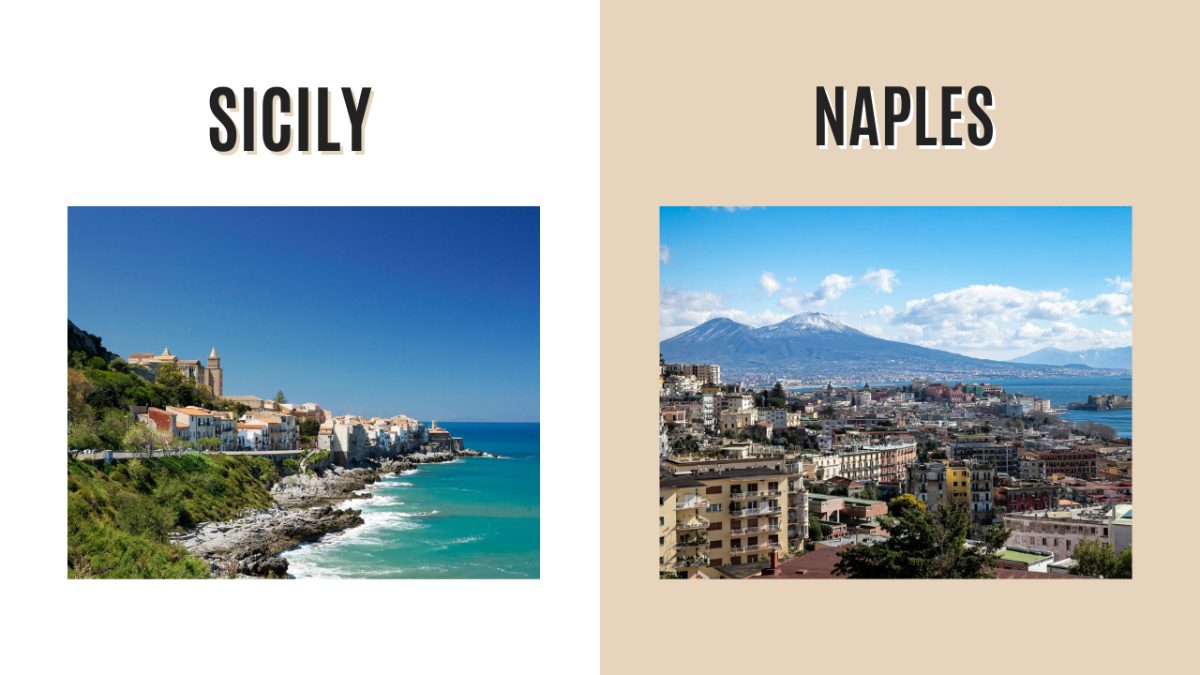
Sicily and Naples offer strikingly different landscapes in southern Italy. From volcanic peaks to coastal plains, these regions showcase the diverse beauty of the Mediterranean.
Sicilian Landscape
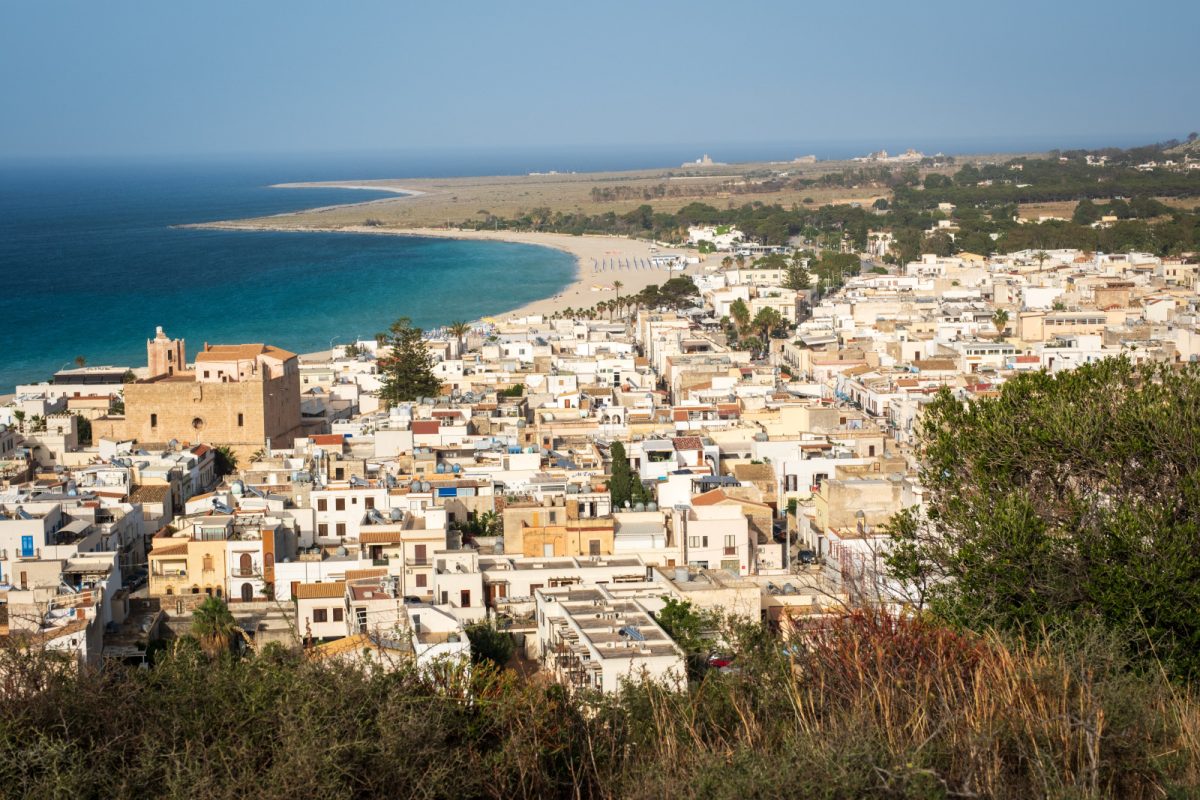
Sicily is the largest island in the Mediterranean Sea, with a varied terrain that’ll take your breath away. Rugged mountains dominate the interior, while fertile coastal plains stretch along the shores.
The island’s crown jewel is Mount Etna, Europe’s tallest active volcano at 3,326 meters. It’s a sight, especially when it’s puffing out smoke!
The coastline is a mix of sandy beaches and dramatic cliffs. Some of the prettiest beaches are near Taormina and San Vito Lo Capo. Inland, rolling hills covered in vineyards and olive groves paint a picture-perfect scene.
Sicily’s climate is typically Mediterranean, with hot summers and mild winters. Expect temperatures around 30°C (86°F) in July and August. Spring and fall are ideal for exploring, with comfortable temps and fewer crowds.
Naples and Surroundings
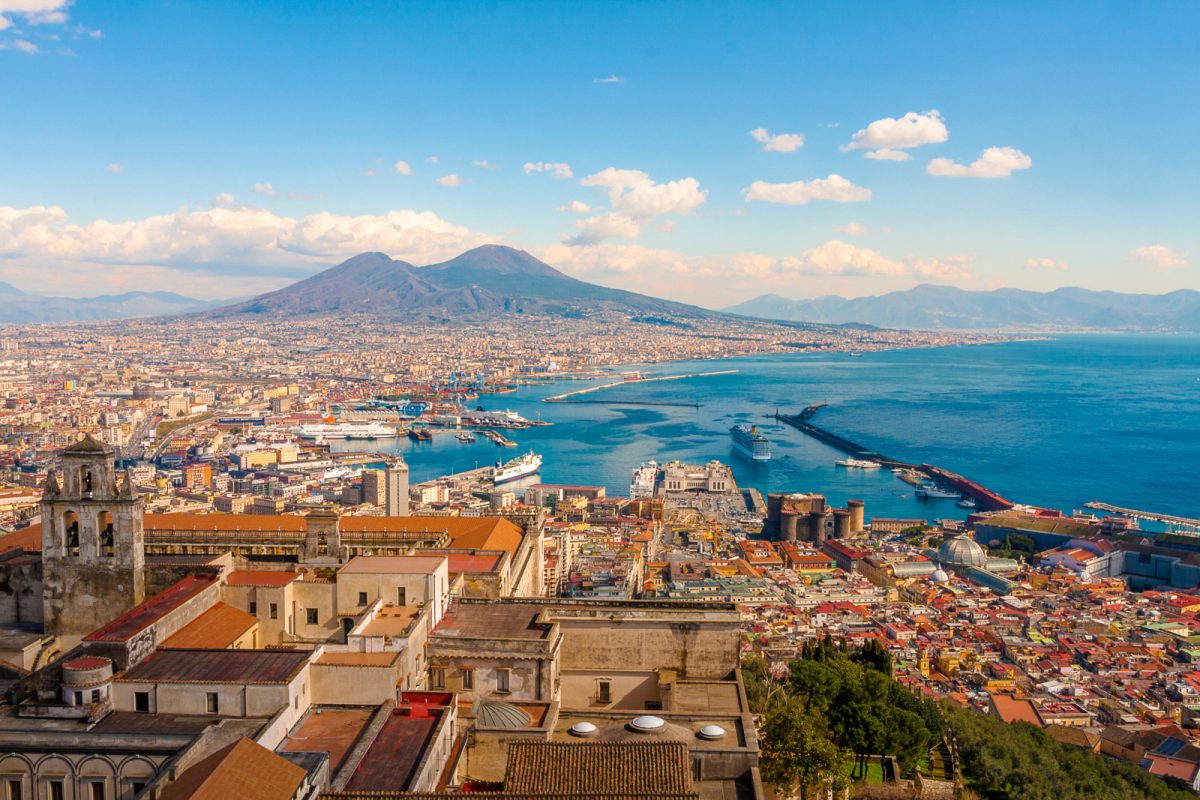
Naples sits on the western coast of Italy, hugging the Bay of Naples. The city sprawls across a series of hills and flatlands, with the imposing silhouette of Mount Vesuvius looming to the east. This infamous volcano, dormant since 1944, is a constant reminder of the region’s volatile geology.
The city center is a maze of narrow streets and grand piazzas, reflecting its long history. Just offshore, you’ll spot the islands of Capri, Ischia, and Procida – each a gem in its own right.
Naples has a Mediterranean climate, but it’s milder than Sicily. Summers are warm, with average highs around 29°C (84°F) in August. Winters are cool and can be rainy, so pack a jacket if you’re visiting from November to March.
The surrounding Campania region offers diverse landscapes, from the lush Amalfi Coast to the south to the rugged mountains inland. It’s a feast for the eyes at every turn!
Historical Significance

Sicily and Naples both have deep roots stretching back thousands of years. These two Italian gems have seen empires rise and fall, leaving rich cultural legacies that continue to shape them today.
Sicily’s Rich Past
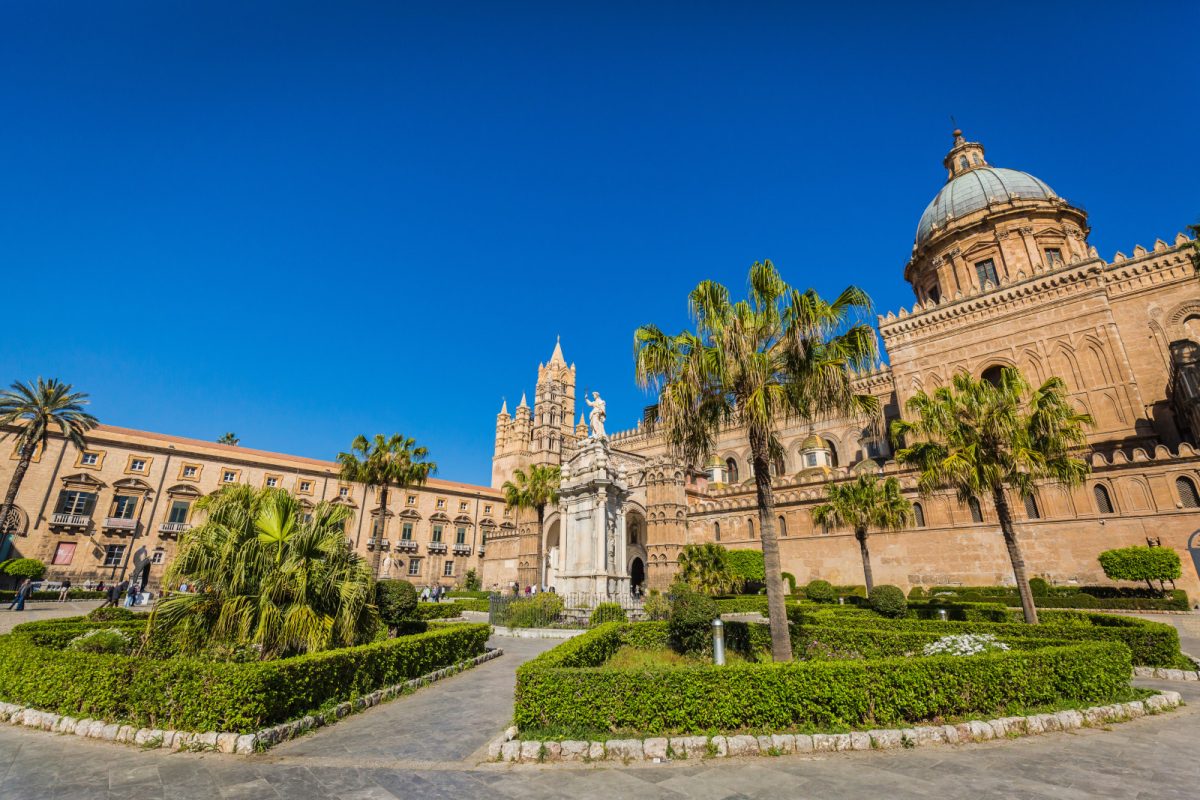
The Greeks set up shop in Sicily in the 8th century BC. They built grand temples and theaters, some of which you can still visit, like the stunning Valley of Temples in Agrigento. Later, the Romans, Arabs, and Normans all left their mark.
Walking through Palermo feels like stepping into a history book. You’ll spot Norman churches next to Baroque palaces and bustling markets that haven’t changed much in centuries. The Palazzo dei Normanni is a must-see – it was the seat of Sicily’s kings and still wows visitors with glittering Byzantine mosaics.
Sicily has been ruled by just about everyone over the years. Each group brought new foods, art, and ideas that blended into the island’s unique culture. It’s like a tasty lasagna of history—so many layers to dig into!
Historic Naples
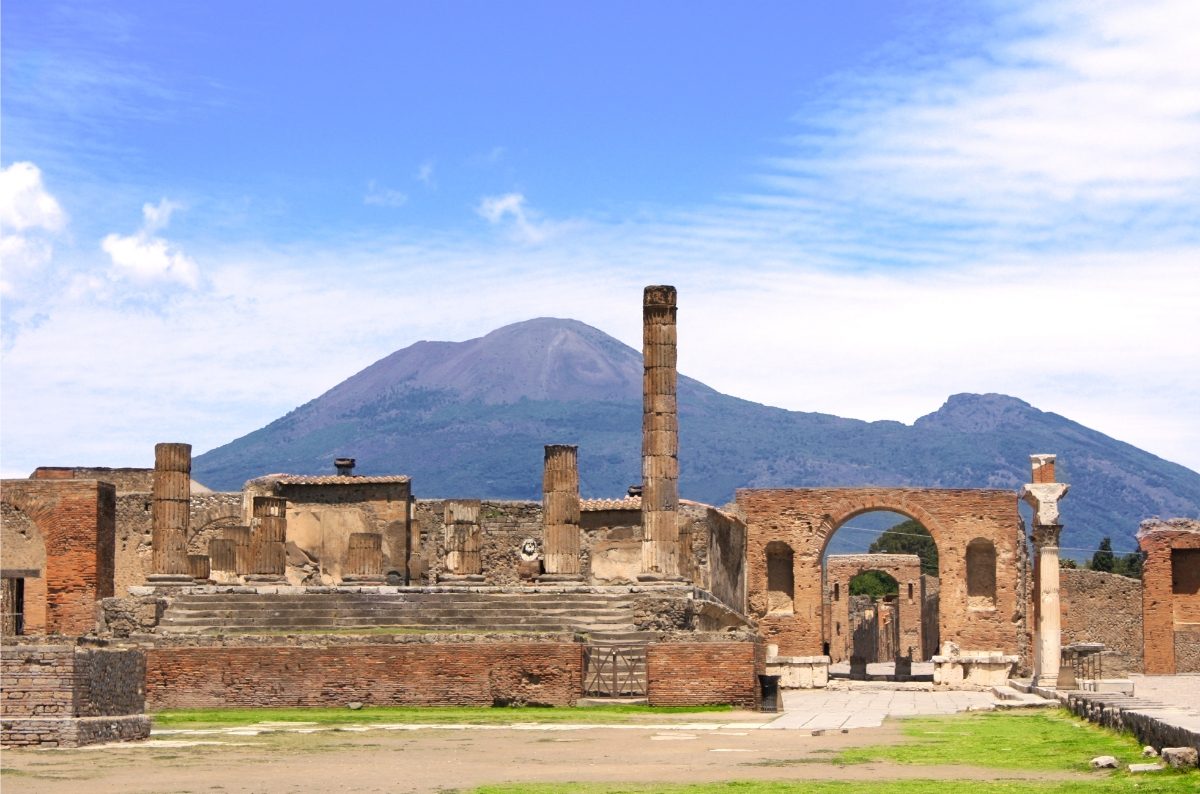
Naples has an impressive backstory. The Greeks founded it as Neapolis (“New City”) around 470 BC. It grew into a major Roman port and playground for wealthy citizens looking to escape Rome’s hustle and bustle.
The city’s historic center is a UNESCO World Heritage site packed with centuries-old churches, castles, and palaces. Stroll down Spaccanapoli, and you’ll feel like you’ve time-traveled back to the Middle Ages.
Naples’ big claim to fame? Pompeii sits right on its doorstep. This ancient city frozen in time by Mt. Vesuvius gives us an incredible window into daily Roman life. It’s eerie and fascinating – certainly worth the day trip from Naples.
Don’t miss the Naples National Archaeological Museum. It’s got treasures from Pompeii and Herculaneum that’ll make your jaw drop. Think colorful frescoes, intricate mosaics, and even some “naughty” Roman art that might make you blush!
Culinary Delights
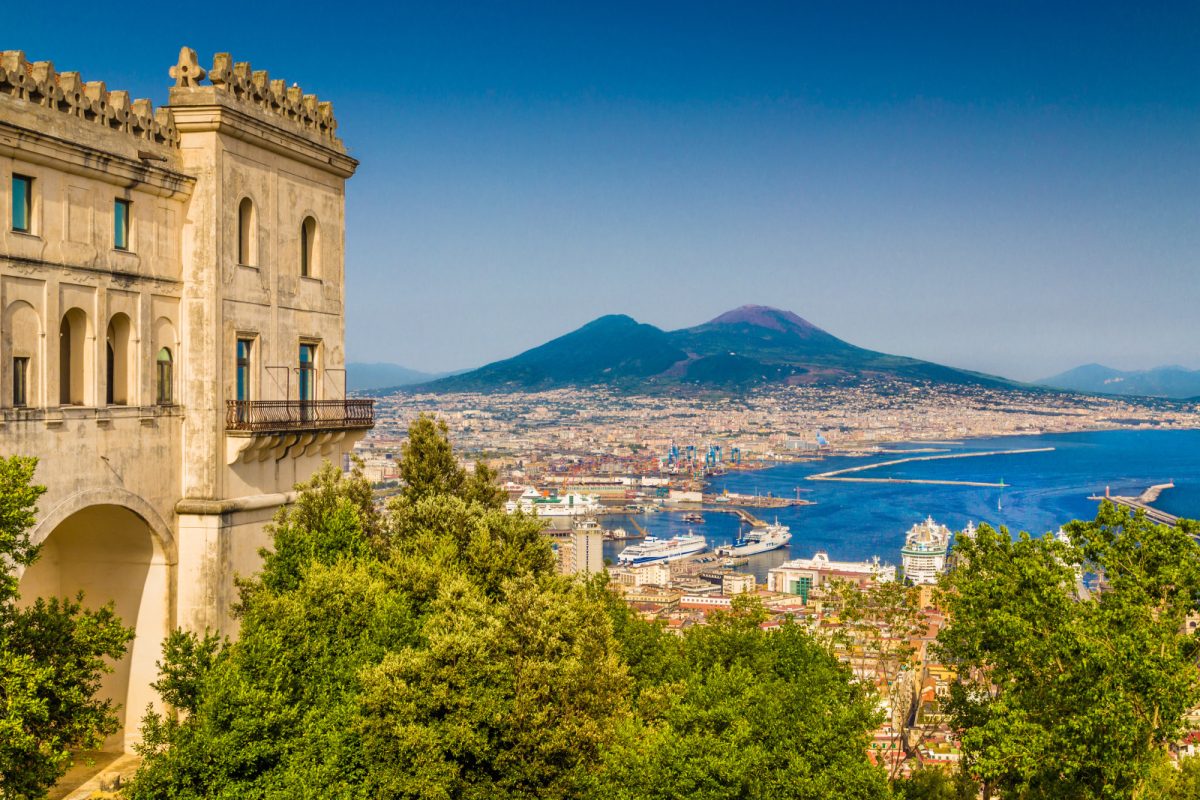
Sicily and Naples are treasure troves of mouthwatering flavors. These regions offer some of Italy’s most iconic dishes, each with its unique twist on traditional recipes.
Savoring Sicilian Cuisine
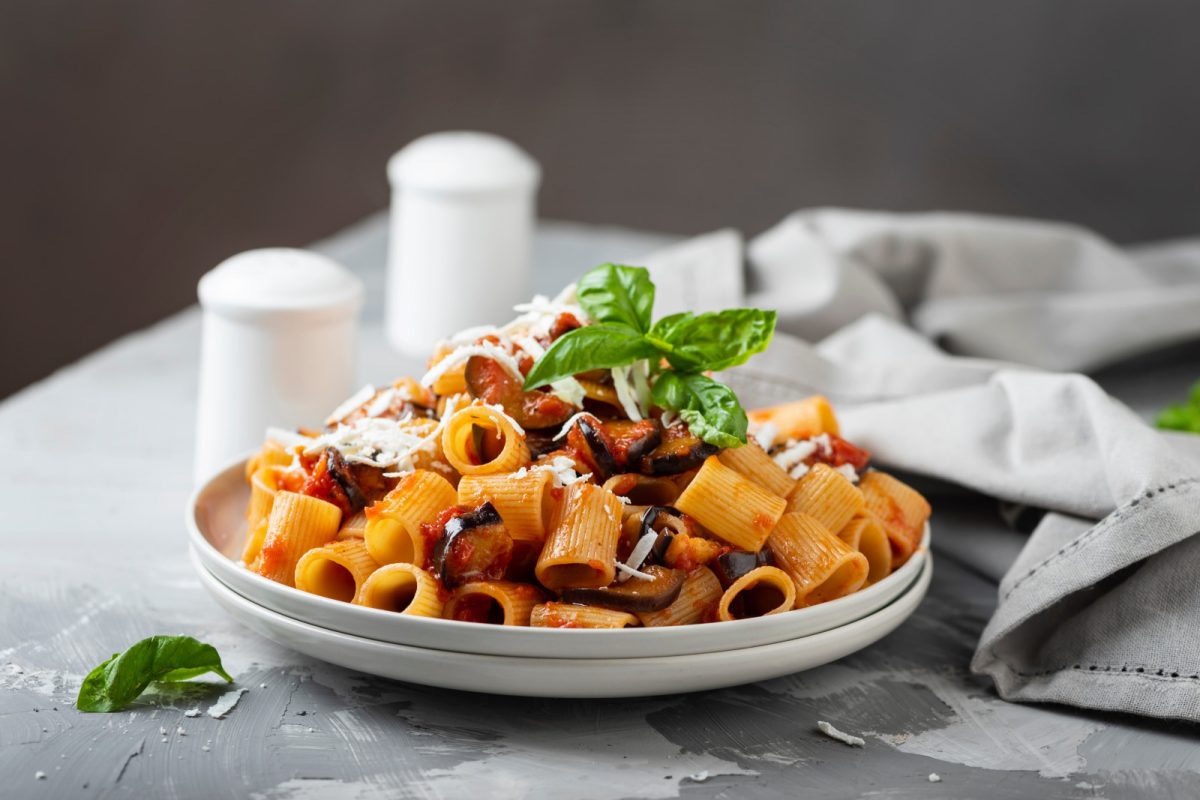
Sicily’s food is a melting pot of flavors. The island’s arancini are crispy rice balls stuffed with meat, cheese, or veggies. You’ll find them on every street corner for about €2-3 each.
Pasta alla Norma is another must-try. It’s a hearty mix of eggplant, tomatoes, and ricotta salata cheese. Locals say the best version is in Catania, where it was invented.
For dessert, cannoli reign supreme. These crispy tubes filled with sweet ricotta cream are heavenly. They’re best eaten fresh, so look for places that fill them to order.
Don’t forget to cool off with granita, a slushy treat with flavors like lemon, almond, or coffee. It’s perfect on a hot summer day by the beach.
Naples: Birthplace of Pizza

Naples is the pizza capital of the world. The city’s signature Margherita pizza is simple perfection – just tomatoes, mozzarella, and basil on a thin crust.
For the real deal, head to L’Antica Pizzeria da Michele. It’s been around since 1870 and still draws crowds. Expect to pay about €5-7 for a whole pizza.
But Naples isn’t just about pizza. Try the sfogliatella, a shell-shaped pastry filled with sweet ricotta. It’s crispy, flaky, and addictive.
Seafood lovers should order spaghetti alle vongole. This pasta dish with clams, garlic, and olive oil captures the essence of Naples’ coastal cuisine.
See Related: Northern Italy vs Southern Italy: A Comprehensive Comparison
Architectural Wonders

Sicily and Naples both showcase incredible architectural marvels that span centuries of history. These cities allow visitors to step back in time and marvel at human ingenuity.
Sicily’s Architectural Tapestry
Sicily’s buildings tell the story of its diverse cultural influences. Greek temples dot the landscape, like the Valley of the Temples in Agrigento. With its well-preserved Doric structures, this UNESCO World Heritage site is a must-see.
Palermo, the island’s capital, is a treasure trove of architecture. The Norman Palace blends Arab, Norman, and Byzantine styles. Its Palatine Chapel dazzles with golden mosaics. Don’t miss the city’s ornate Baroque churches either.
For a unique experience, head to the Villa Romana del Casale. This ancient Roman villa boasts some of the best-preserved mosaics in the world. The intricate floors depict scenes from daily life and mythology.
Naples’ Historic Buildings
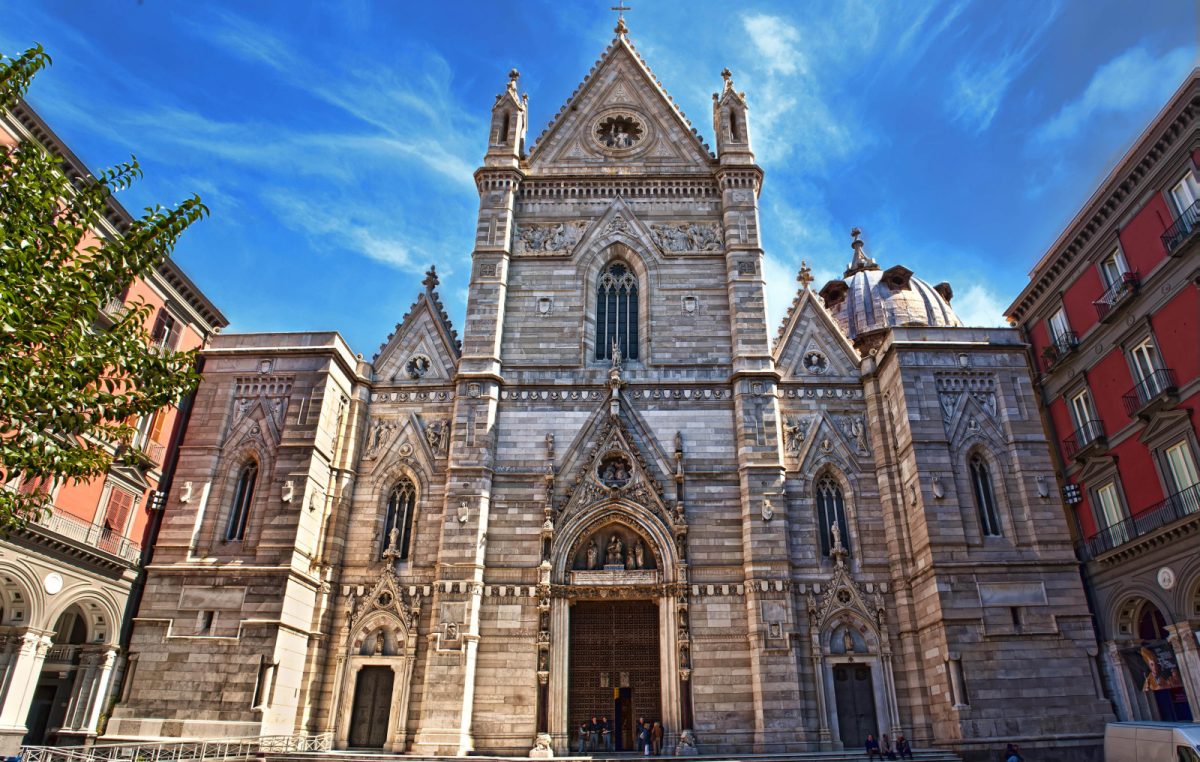
Naples’ historic center, a UNESCO site, is a labyrinth of architectural wonders. Spaccanapoli, the main street, cuts through the heart of the old town. It’s lined with palaces, churches, and shops that have stood for centuries.
The city’s churches are architectural marvels. The Duomo di Napoli houses the Chapel of the Treasure of San Gennaro, dripping in gold and precious stones. For a more mysterious experience, visit the Museo Cappella Sansevero. Its marble sculptures defy belief, especially the famous Veiled Christ.
Naples’ castles offer a glimpse into its past. Castel Nuovo, with its triumphal arch, symbolizes the city. Castel dell’Ovo sits on the waterfront, offering stunning views of the Bay of Naples.
Cultural Experiences
Sicily and Naples offer vibrant cultural scenes rooted in centuries of history. Both destinations allow visitors to soak up authentic Italian traditions, cuisine, and daily life.
Immersive Sicilian Traditions
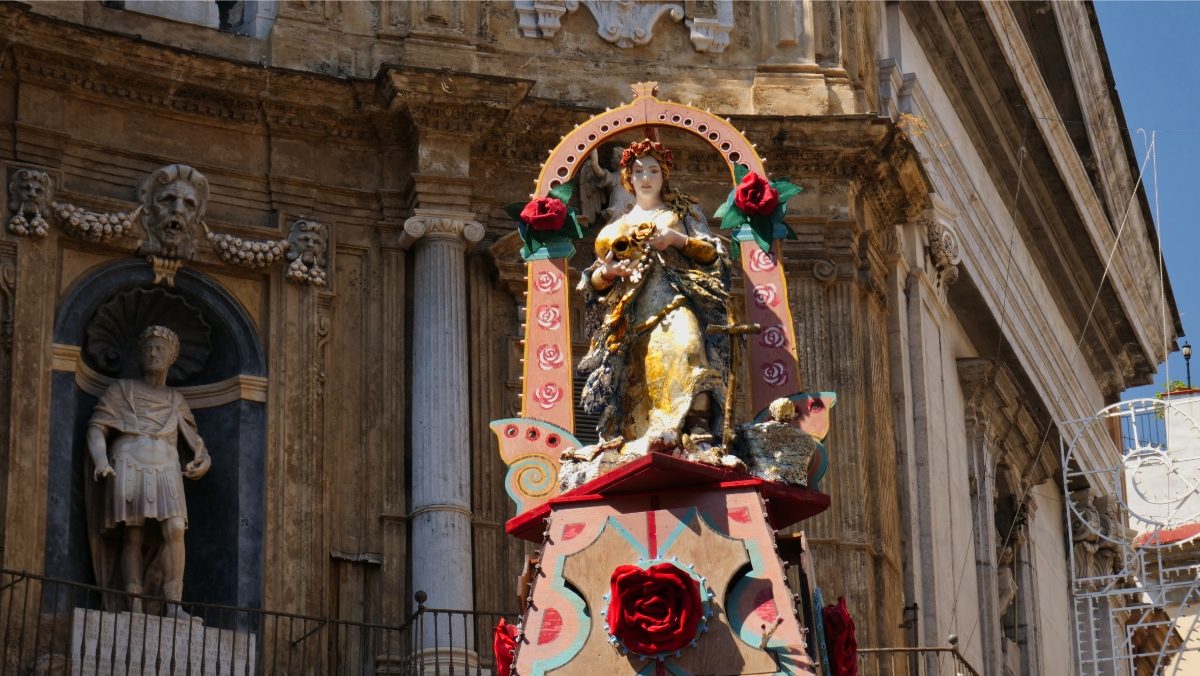
Sicily’s culture uniquely blends influences from its many past rulers. Visitors can dive into colorful festivals like the Feast of Santa Rosalia in Palermo each July. Locals parade through streets carrying a statue of the patron saint. Easter brings dramatic religious processions in towns across the island.
Food lovers shouldn’t miss Sicily’s bustling markets. The Ballaro market in Palermo is a sensory feast of sights, sounds, and smells.
Vendors hawk fresh seafood, spices, and local produce. For about €10, you can sample street food like arancini (fried rice balls) or pasta alla Norma.
In small villages, elderly men still gather in piazzas to play cards and chat. It’s a glimpse into Sicily’s slower pace of life.
Neapolitan Lifestyle and Culture
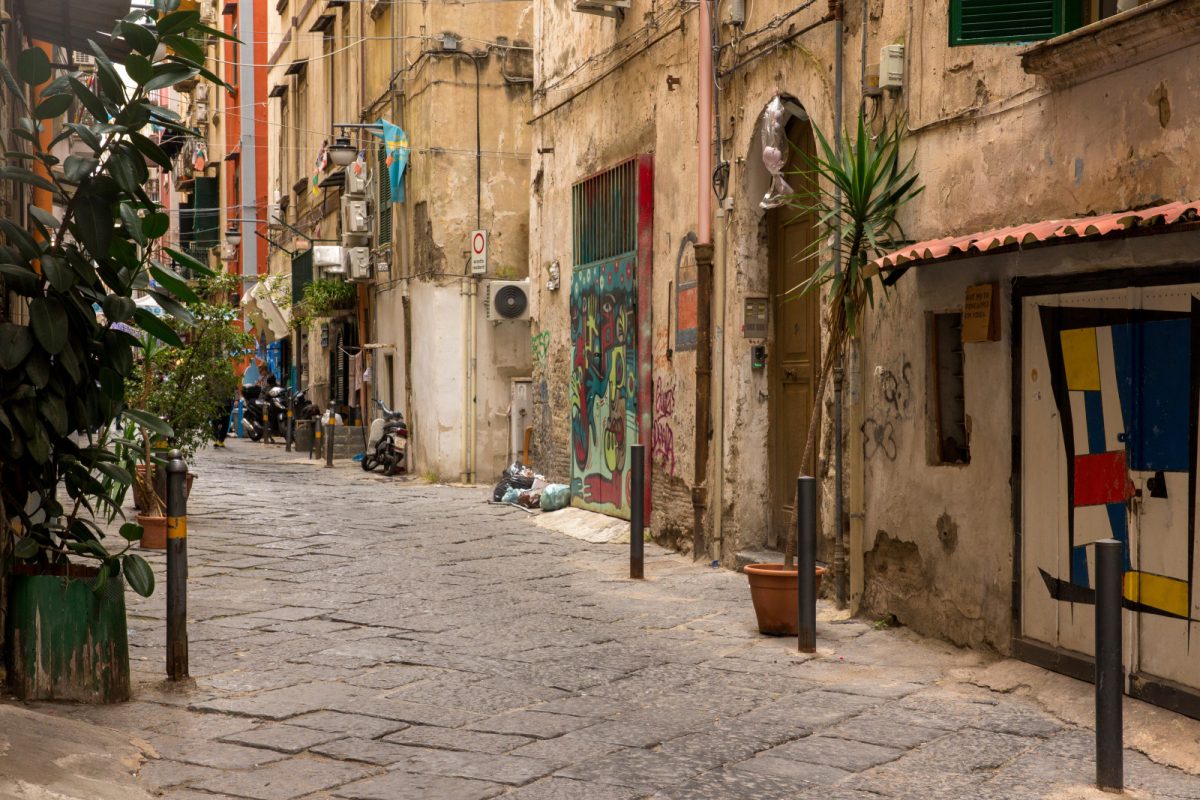
Naples pulses with energy and passion. The city birthed pizza, and it’s essential to try an authentic Neapolitan margherita. At places like Da Michele, you’ll pay just €5 for a pie.
Neapolitans are known for their warm hospitality and zest for life. Strangers often strike up conversations in cafes or on the street. Don’t be surprised if a local offers tips on the best nearby sights.
Art lovers can explore world-class museums like the National Archaeological Museum. It houses treasures from Pompeii and costs €15 to enter. Catch an opera at the stunning Teatro di San Carlo in the evenings.
The Spanish Quarter offers a slice of typical Neapolitan life. Narrow streets buzz with scooters, and laundry hangs from balconies. It’s chaotic but charming – the epitome of Naples’ unique character.
Iconic Attractions
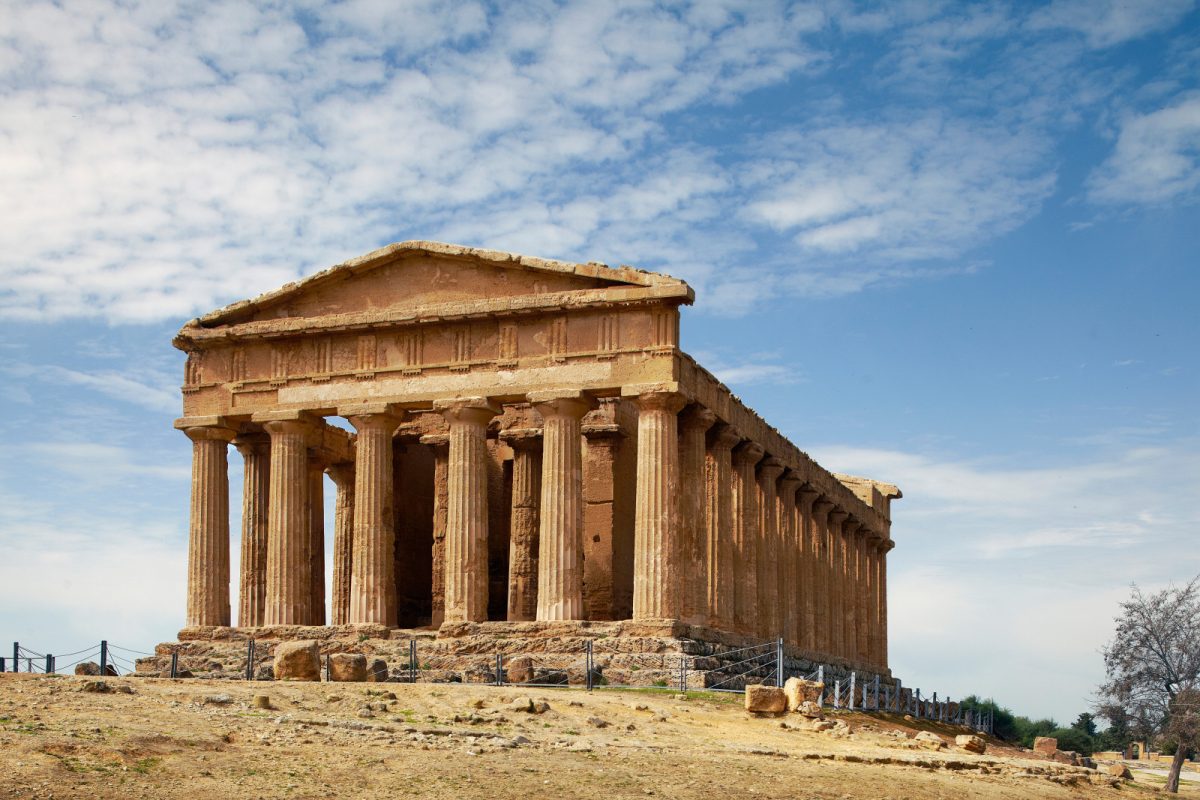
Sicily and Naples boast some of Italy’s most stunning landmarks and historical sites. From ancient ruins to breathtaking coastal views, these destinations offer unforgettable experiences for travelers.
Must-Visit Sites in Sicily
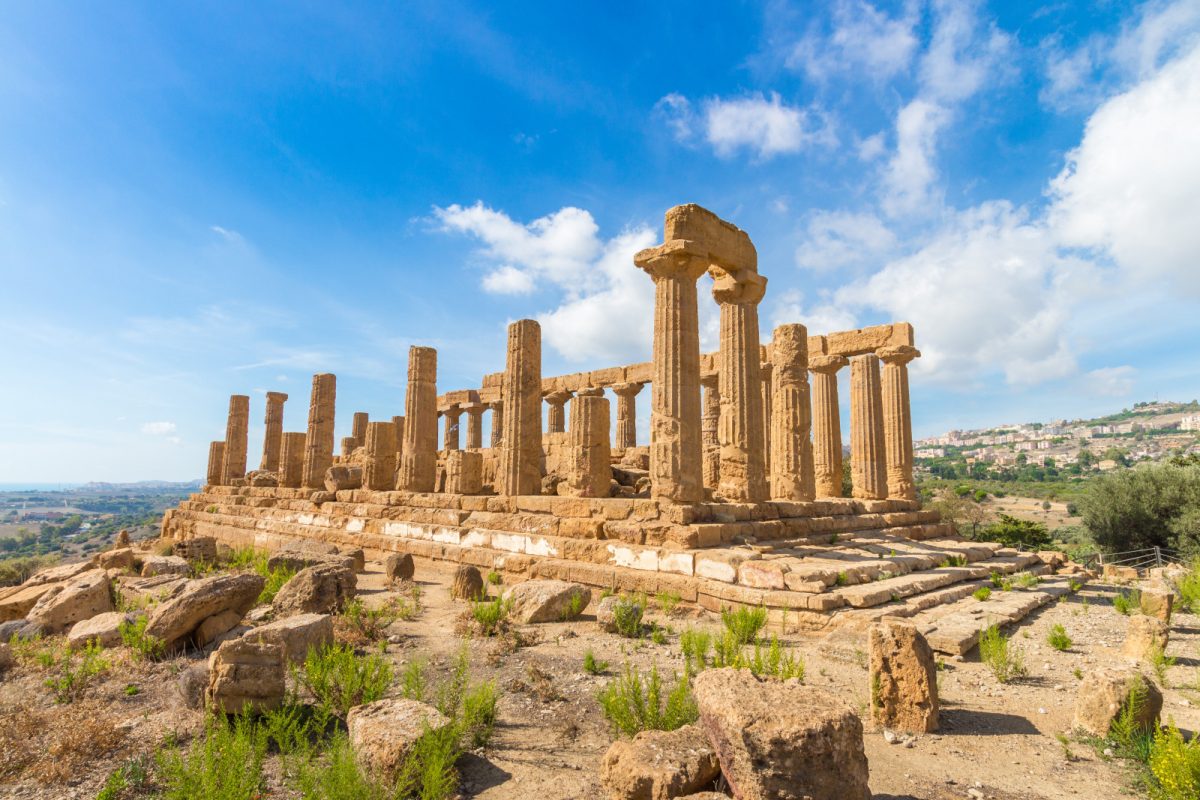
Sicily’s rich history shines through its impressive attractions. The Valley of the Temples in Agrigento is a must-see, with its well-preserved Greek temples dating back to the 5th century BC. It’s truly awe-inspiring to walk among these ancient ruins.
Taormina is another gem, perched on a hilltop with sweeping Mediterranean views. The Greek Theater here is spectacular, especially during summer performances. Ticket prices range from €10 to € 50, depending on the event.
Don’t miss Mount Etna, Europe’s tallest active volcano. You can take guided tours to explore its lunar-like landscapes and steaming craters. Prices start at around €60 for a half-day trip.
Naples’ Famous Landmarks
Naples is packed with iconic sights. The historic center, a UNESCO World Heritage site, is a maze of narrow streets and baroque churches. It’s like stepping back in time.
The National Archaeological Museum houses incredible artifacts from Pompeii and Herculaneum. Entry costs €15, but it’s worth every euro. You’ll see mosaics, frescoes, and everyday objects that bring ancient Roman life to vivid detail.
Speaking of Pompeii, it’s just a short train ride from Naples. Walking through this preserved city is eerie and fascinating. Go early to beat the crowds, and bring water – it gets hot!
For a breath of fresh air, head to the Amalfi Coast. The colorful cliffside towns and sparkling sea views are postcard-perfect. Take a boat tour for the best vistas.
See Related: Sicily vs Florence: Ultimate Showdown – Which Italian Gem Steals Your Heart?
Shopping and Markets
Sicily and Naples both offer unique shopping experiences. Each destination has its own character when it comes to markets and stores, reflecting the local culture and traditions.
Sicilian Markets and Boutiques
Sicily’s markets burst with color and life. In Catania, the famous fish market La Pescheria is a must-see. Vendors shout and joke as they sell fresh catches from the Mediterranean. It’s a feast for the senses!
For fashion lovers, Palermo’s Via della Libertà is the place to be. You’ll find high-end Italian brands and local boutiques. Prices can be steep, but the quality is top-notch.
Don’t miss the artisan shops in Taormina. They sell beautiful ceramics, lace, and leather goods. Perfect for unique souvenirs! Prices for handmade items start around €20.
Shopping in Naples
Naples is a shopper’s paradise. Via Toledo, the main shopping street, is always buzzing. You’ll find everything from trendy boutiques to big-name stores.
For a real treat, check out the Galleria Umberto I. This stunning glass-roofed arcade houses luxury shops and cafes. It’s worth a visit just to admire the architecture!
Naples is famous for its artisanal crafts. Head to San Gregorio Armeno for handmade nativity scenes. They’re works of art, with prices from €30 to hundreds of euros.
For bargain hunters, the Mercato di Porta Nolana is a treasure trove. You’ll find clothes, food, and knick-knacks at great prices. Just keep an eye on your wallet!
Travel Itineraries
Sicily and Naples offer unique experiences for travelers. From charming coastal towns to ancient ruins, these destinations have something for everyone.
Exploring Sicily’s Cities and Villages
Start your Sicilian adventure in Palermo, the vibrant capital. Wander through bustling markets like Vucciria and Ballarò. Don’t miss the stunning Cattedrale di Palermo.
Head to Taormina next. This picturesque hilltop town boasts amazing views of Mount Etna. Explore the Greek Theater and stroll down Corso Umberto I for shopping.
Venture to Syracuse to see the ancient ruins and charming Ortygia island. Stop by smaller villages like Noto and Ragusa for Baroque architecture and local cuisine.
End your trip in Agrigento to marvel at the Valley of the Temples. These Greek ruins are a UNESCO World Heritage site. Plan to spend at least a week exploring Sicily’s diverse attractions.
Naples and the Amalfi Coast Road Trip

Kick off your journey in Naples. Sample authentic Neapolitan pizza and explore the historic centro storico. Visit the National Archaeological Museum to see artifacts from Pompeii.
Drive along the stunning Amalfi Coast. Stop in Positano to admire the colorful buildings cascading down the cliffs. Enjoy a limoncello in a seaside cafe.
Continue to Amalfi town. Tour the beautiful Duomo di Sant’Andrea and learn about the area’s maritime history.
End your trip to Ravello. This hilltop town offers breathtaking views of the coast. Visit Villa Rufolo’s gardens and catch a concert at the outdoor theater.
Allow 5-7 days for this itinerary. The winding coastal roads can be tricky, so consider hiring a driver if uncomfortable.
Local Activities and Entertainment
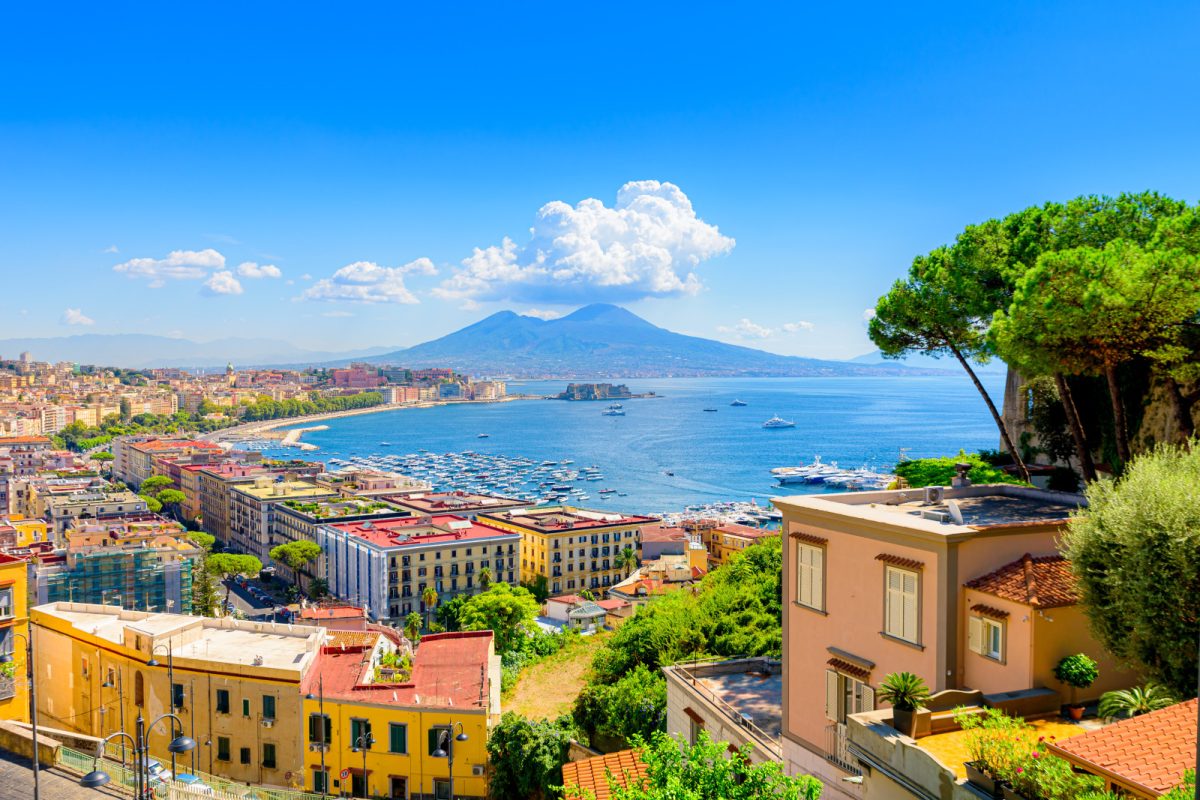
Sicily and Naples offer unique experiences for travelers. From ancient ruins to vibrant nightlife, these destinations have something for everyone.
Adventures in Sicily
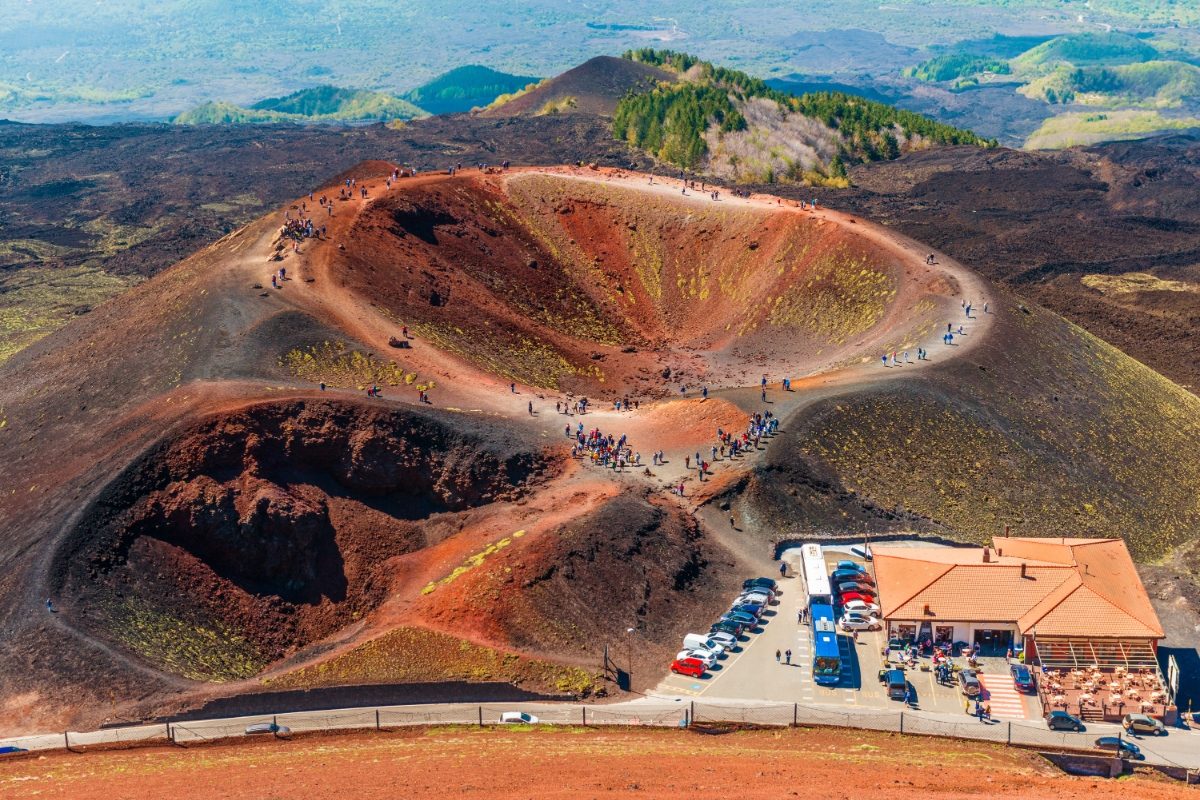
Sicily is an island paradise for adventure seekers. You can hike Mount Etna, Europe’s tallest active volcano. It’s a challenging but rewarding trek with breathtaking views. Bring sturdy shoes and a jacket – it gets chilly up there!
Beach lovers will adore Taormina’s crystal-clear waters. Rent a kayak or try snorkeling to explore hidden coves. The charming town also has great shops and cafes for a relaxing afternoon.
Food tours are a must in Sicily. Learn to make fresh pasta or join a street food walk in Palermo. Prices range from €50-100 per person. Book ahead in summer – it gets busy!
Entertainment in Naples
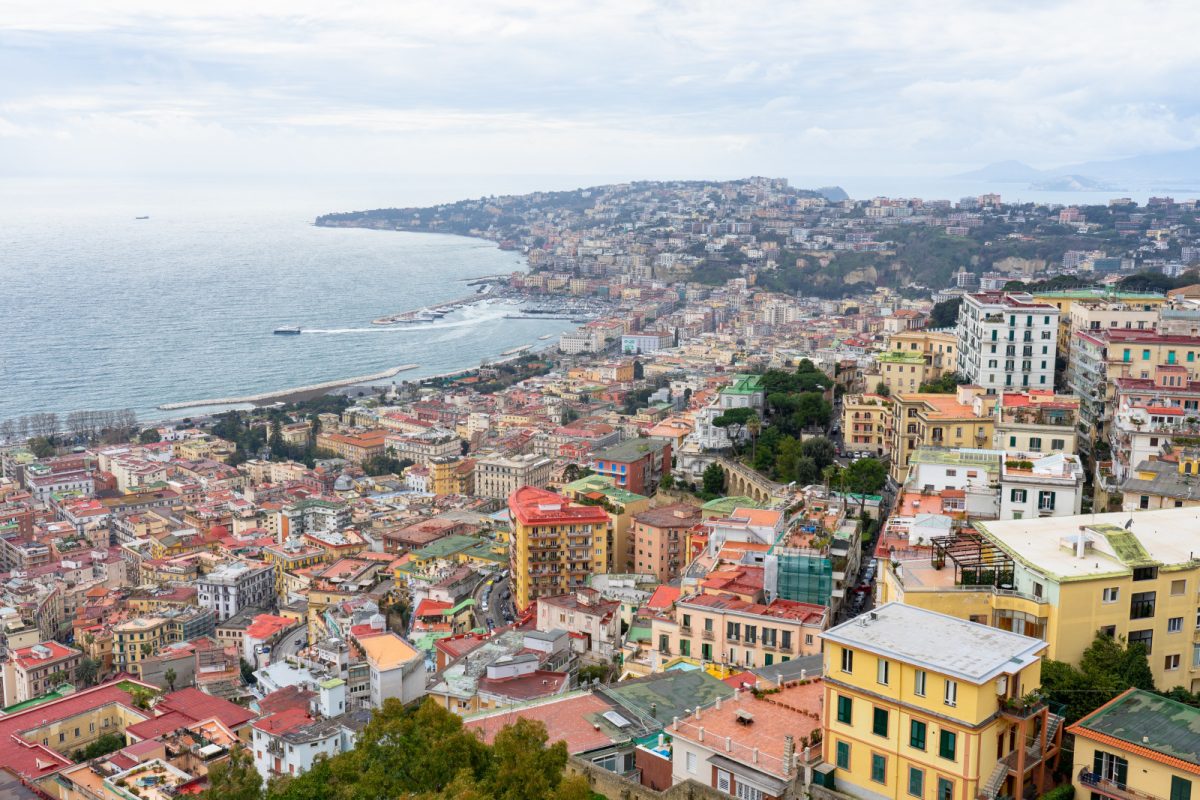
Naples pulses with energy day and night. Start with a stroll down Spaccanapoli, the main street cutting through the historic center. It’s lined with quirky shops, churches, and pizzerias.
Music lovers shouldn’t miss a show at Teatro San Carlo. This stunning opera house hosts world-class performances. Tickets start at €30 but book early for good seats.
For a fun family day, head to the Naples Aquarium. Kids will love the touch pools and shark tunnel. Adult tickets are €16, and kids under 12 pay €12.
At night, join locals for an evening passeggiata along the waterfront. Grab a gelato and people-watch as the sun sets over the Mediterranean Sea. It’s a perfect way to soak up Naples’ lively atmosphere.
See Related: Two Weeks in Italy Itinerary: The Perfect Family Adventure
Frequently Asked Questions
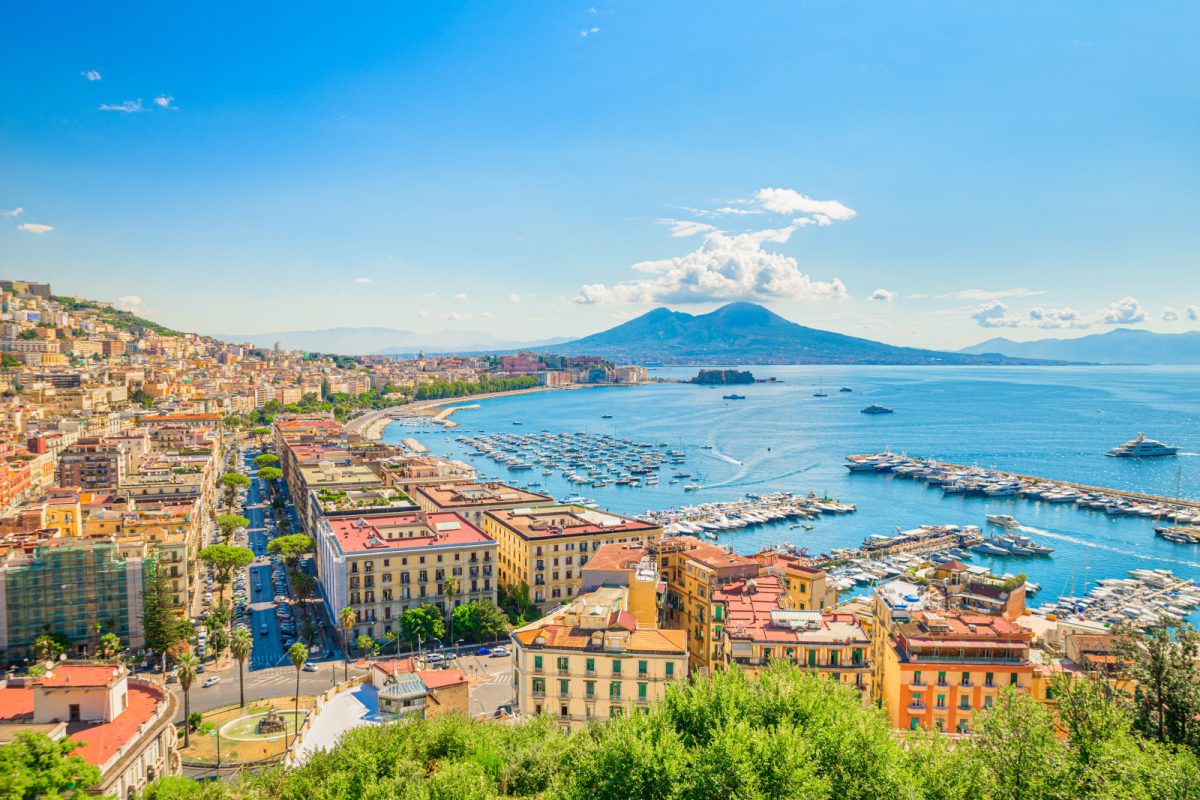
Traveling between Naples and Sicily offers unique experiences. Let’s explore some key aspects to help you plan your Italian adventure.
What are the best ways to travel from Naples to Sicily?
The ferry is a popular option for getting from Naples to Sicily. It takes about 10-11 hours to reach Palermo from Naples by sea. You can book overnight trips to save on hotel costs. Flights are faster, usually under an hour, but can be pricier. Some folks prefer the scenic train ride along the coast, though it’s a longer journey.
What are the must-see attractions in both Naples and Sicily?
Naples boasts the ancient ruins of Pompeii and Herculaneum. Don’t miss the Royal Palace and the vibrant streets of Spaccanapoli. In Sicily, the Valley of the Temples in Agrigento is breathtaking. Mount Etna, Europe’s largest active volcano, is a big draw. Taormina’s Greek theater offers stunning views.
Can you compare the culinary experiences in Naples and Sicily?
Naples is the birthplace of pizza. Try the classic Margherita at L’Antica Pizzeria da Michele for about €7. Sicily is known for arancini (rice balls) and cannoli. Sample fresh seafood pasta in coastal towns like Cefalù. Both places have amazing street food scenes. Grab a sfogliatella in Naples or granita in Sicily for a sweet treat.
What are the differences in culture and history between Naples and Sicily?
Naples has a gritty, urban vibe with strong Spanish influences. It’s been a major city since ancient times. Sicily feels more rustic and laid-back. The island’s history includes Greek, Roman, Arab, and Norman rule. This mix shows in the architecture and local customs. Sicilians often have a strong regional identity separate from mainland Italy.
Which destination is recommended for a honeymoon: the Amalfi Coast or Sicily?
The Amalfi Coast, near Naples, is romantic with its cliffside towns and luxury hotels. Positano is picture-perfect but can be crowded and expensive in summer. Sicily offers more variety for honeymooners. You can relax on beaches, explore ancient ruins, and enjoy intimate dinners in charming villages. Taormina is a popular spot for couples.
How do the beaches in Naples compare to those in Sicily?
Naples has some nice beaches nearby, like Gaiola and Miseno. But Sicily wins for beach lovers. The island boasts countless beautiful shores. San Vito Lo Capo has Caribbean-like white sand and clear water. Isola Bella near Taormina is a stunning pebble beach. Sicily’s beaches tend to be less crowded than those near Naples.

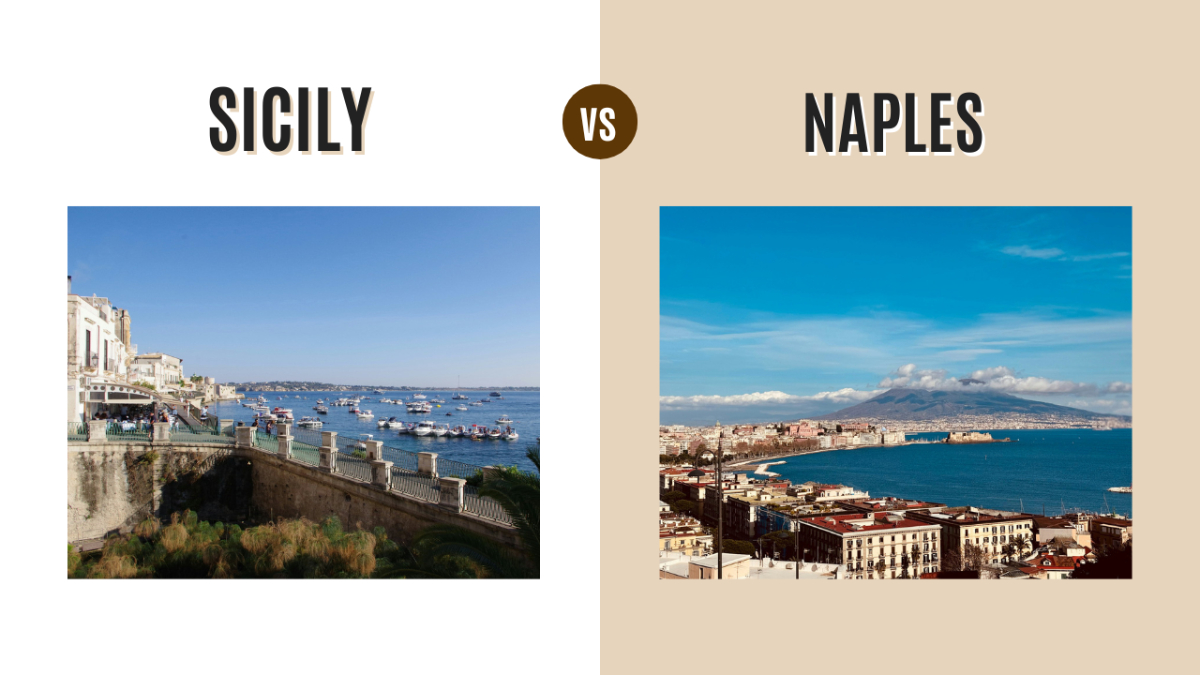
0 Comment